Did you know?
Nature has protected and provided stability to your knee joint with many supportive structures known as ligaments.
But due to the knee joint’s mobile nature, its ligaments are at increased risk of injury.
These injuries are one of the commonly encountered injuries and many people get worried about their future activities after sustaining such an injury.
The lateral collateral ligament (LCL), a thin cord of tissues that runs along the outer side of the knee and connects the thigh bone (femur) with the outer bone (fibula) of the lower leg.
In this article, I will have a closer look at this ligament’s injury, signs and symptoms of LCL injury and treatment options.
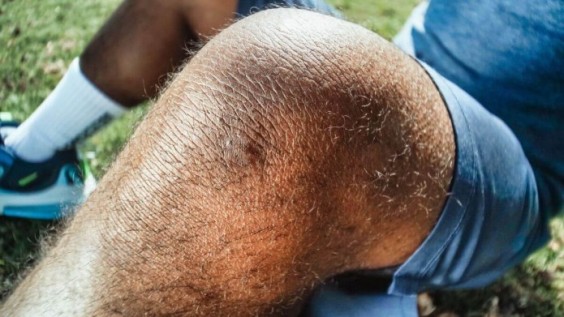
What is an LCL injury?
Did you know that the lateral collateral ligament (LCL), present on the outer side of your knee joint, prevents your knee joint from excessive outward movement?
It provides stability to your knee joint by limiting extra posterior and outward rotation of your shin and thigh bones during various movements. (1)
Usually, LCL injury occurs due to over-stretching on this ligament and it can be injured if there is trauma to inner side of the knee joint pushing it in outward direction. (2)
Almost 40% of LCL injuries occur during contact sports.
For example, when the knee gets a blow from the inner side towards the outer side. (2)
This happens commonly during sports in which there are high chances of collisions like:
- soccer,
- basketball,
- football,
- hockey,
- skiing, and
- wrestling.
Causes of LCL injury
LCL injury commonly occurs during contact sports when the knee receives a direct blow from the inside and is pushed outwards, or due to rapidly changing directions while pivoting on one foot. (3)
LCL injury can also result because of improper landing technique after a jump.
The chances of getting an isolated LCL injury as compared to the other ligaments of the knee are rare and LCL injury is most commonly associate with the posterior cruciate ligament (PCL) injury.
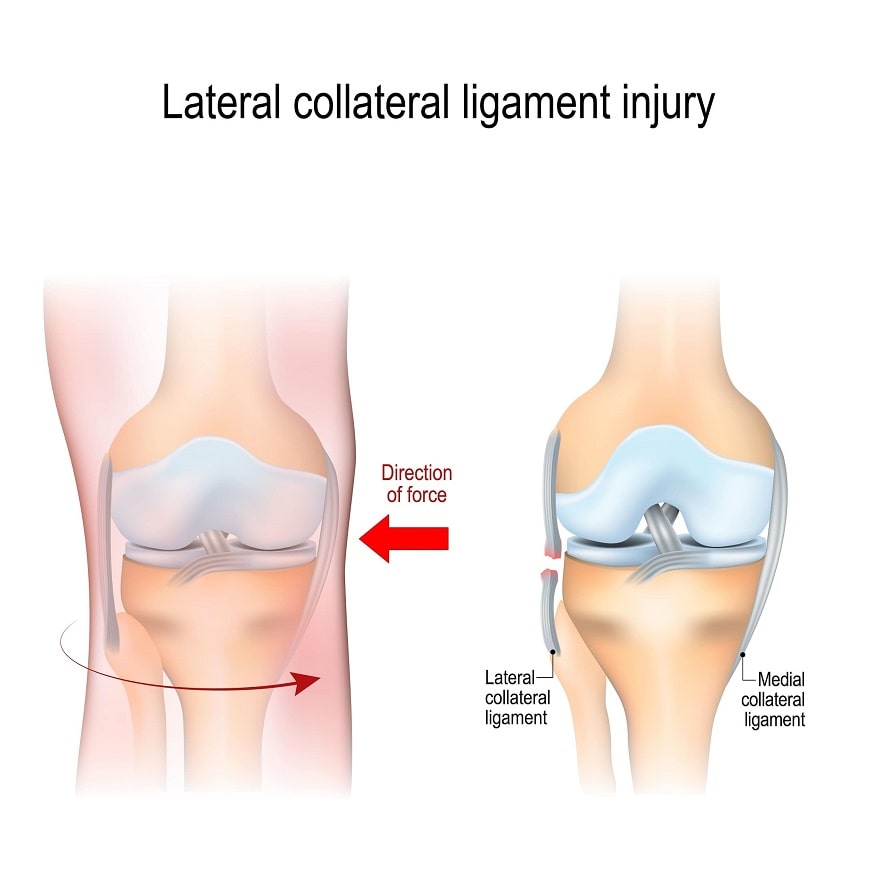
The LCL ligament is damaged relatively less often as compared with the medial collateral ligament (MCL).
Almost 25% of LCL injuries occur when a player is being tackled by an opponent during a game of soccer or a football match (4).
Other reasons include getting a blow to the inner side of the knee while wrestling match or MMA fight.
In a famous MMA fight (UFC 223), Tony Ferguson aka “EL Cucuy” lost the fight against Khabib Nurmagomedov and was ruled out with an LCL injury.
After that, Tony Ferguson had to go for knee surgery for his LCL injury treatment.
The good news is that not every LCL injury requires surgery.
The need for a knee or ligament repair surgery depends on the severity and symptoms after the injury.
LCL injury symptoms
The common LCL injury symptoms include:
- pain,
- stiffness, and
- swelling/tenderness at the outer aspect of the knee joint.
There may be instability of the knee joint or feeling of knee giving way during weight-bearing activities. (5).
Some people may develop numbness or weakness in their foot because of the damaged peroneal nerve which is present near the LCL in the knee joint.
- Are you feeling such symptoms in your knee joint?
- Why not get your knee rehabilitation properly assessed by the best long term qualified rehab personal trainer in London?
Clich here to book your FREE ONLINE CONSULTATION now.
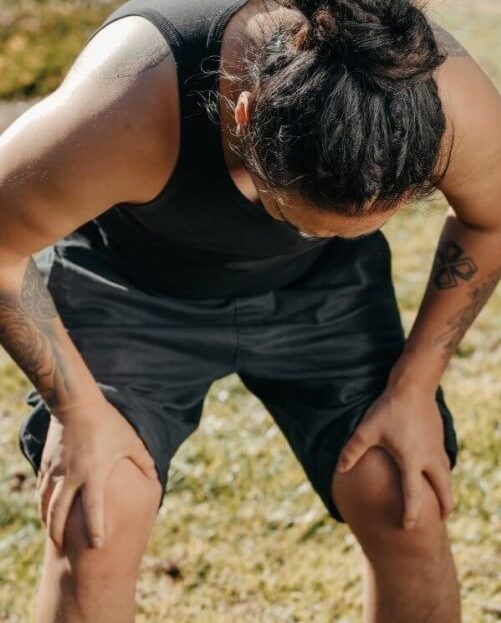
LCL Injury Test
Did you know that there are two ways to diagnose LCL injury?
One way is to perform special physical tests and the other way of diagnosing an LCL injury is by a radiological scan i.e. Magnetic resonance imaging (MRI). (6)
Varus stress test
The special physical tests that are commonly used to diagnose LCL injury are varus stress test and valgus stress test. (6)
Other physical tests to confirm any associated injury are anterior drawer test, posterior drawer test etc.
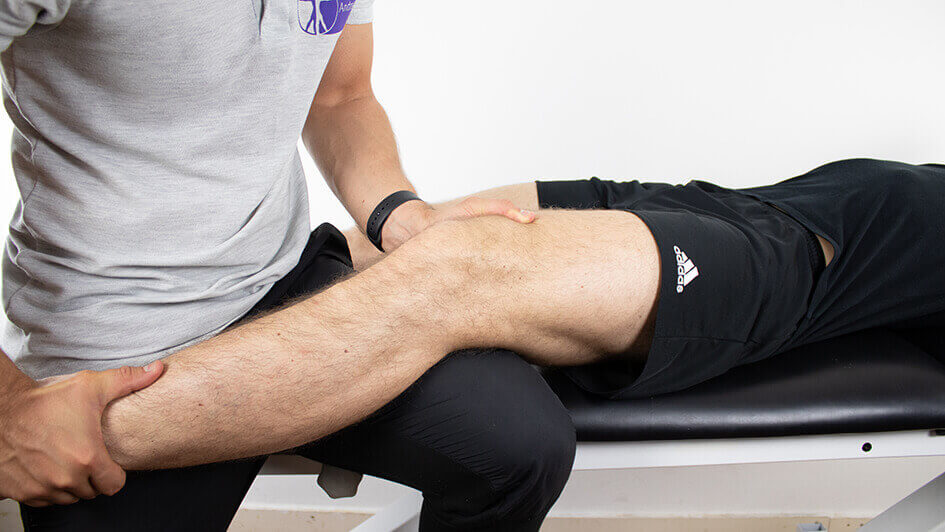
This test is used to assess LCL integrity and stability. (7)
In this test, an outward force from the inner side of the knee joint is applied and degree of movement is assessed.
This force is also called varus force.
If there is extra movement of the knee joint in ourward direction (hypermobility), it suggests that LCL injury has occurred.
Valgus stress test
This test is used to assess medical collateral ligament (MCL). (7)
In this test, an inward force from the outer side of the knee joint is applied and degree of movement at the knee joint is assessed.
This force is also called valgus force.
If there is extra movement of the knee joint in the inward direction (hypermobility), it suggests that MCL injury has occurred.
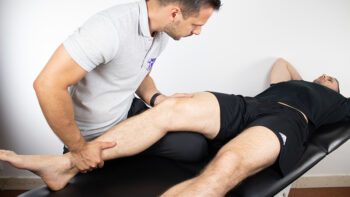
Anterior drawer test:
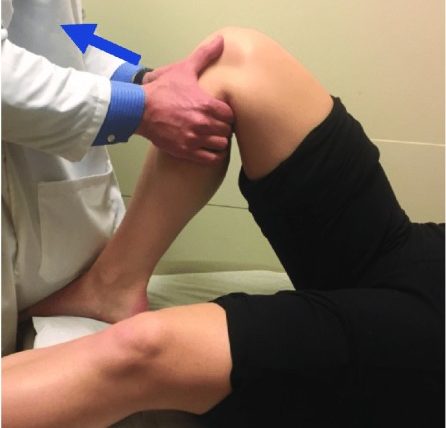
It is a physical test in which the anterior cruciate ligament (ACL) of the knee is assessed to see whether it is intact or ruptured.
It is performed with the individual in a lying position with their knee bent and the shin bone is pulled towards the examiner with both hands. (7)
If any extra movement in the anterior direction is found then there are chances that the ACL is injured.
Posterior drawer test:
It is a physical test in which the posterior cruciate ligament (PCL) of the knee is assessed to see whether it is intact or ruptured.
It is performed with the individual in lying position with their knee bent and the shin bone is pushed in forward direction (away from the examiner’s body). (7)
If any extra movement in the posterior direction is found, then PCL injury is suspected.
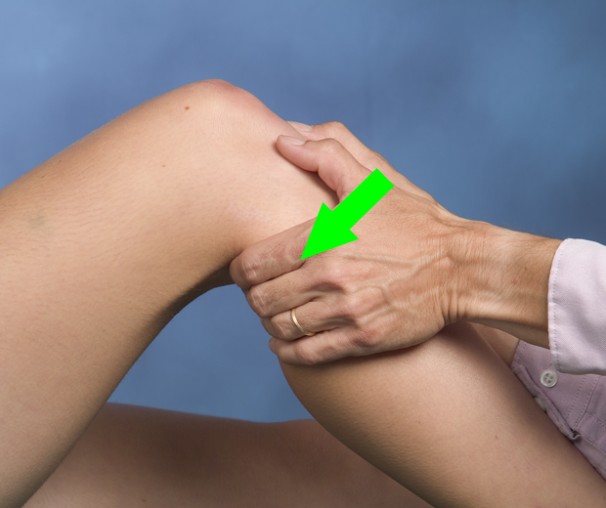
LCL injury grades
You should know that LCL injury symptoms are not the same in every case and they vary from person to person.
The injury may be mild, moderate or severe.
LCL injury is classified into the following grades:
Grade I (Mild): When only a few fibers of LCL are damaged (microscopic tear) and there is minor tenderness on the point of injury.
Grade ll (Moderate): When there are relatively more fibers injured (macroscopic tear) and there is noticeable looseness present.
Grade lll (Severe): When the ligament is completely torn and there is visible instability of the joint with swelling and pain.
- Have you recently sustained a blow to your knee joint and suspecting an LCL injury?
- Why not talk to a personal training master and seek expert knee injury rehab advice and that too for FREE?
Click here to book your FREE ONLINE CONSULTATION now.
LCL injury treatment
Before starting LCL injury treatment, information is gathered about the cause and mechanism of your knee injury.
This helps to make an initial diagnosis.
Physical tests are then performed to be more sure about the ligament’s injury.
Later on, the knee MRI confirms the diagnosis by highlighting soft tissue structures.
The extent of injury is also confirmed which helps to select the most suitable LCL injury treatment protocol.
The LCL injury treatment depends upon the severity of the LCL injury symptoms.
Usually, grade l and grade ll injuries do not require surgery and are managed by:
- rest,
- wearing a brace,
- taking painkillers, and
- physiotherapy exercises. (3)
Minor injuries can be managed well by following the principles of:
- protection,
- rest,
- icing,
- compression, and elevation
Known as the “PRICE” protocol.
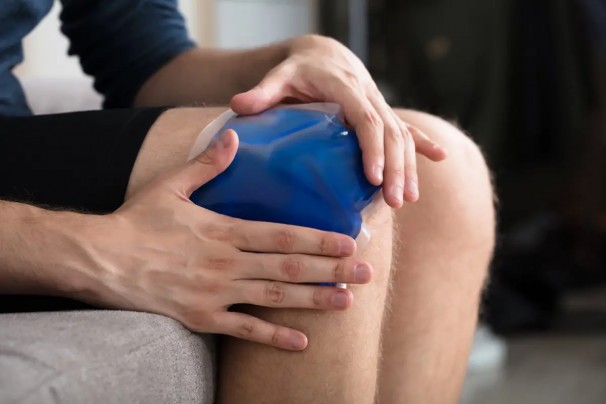
In some cases of collateral ligamentous injuries, protection with little movement is also advised by using a lightweight cast or brace that allows forward and backward movements of the knee but restricts the outwards movement.
But, grade lll injuries always require ligament reconstruction surgeries which consist of an initial period of post-op rest and later on, physical therapy and proper knee injury rehabilitation.
Modern treatments like platelet-rich plasma (PRP) injections are also used for the repair of injured LCL.
In this procedure, platelets-rich plasma that is made from the patient’s blood is used to repair the targeted injured structure. (8)
All these management options are based on the severity of the injury and the aims of the patient and his/her future priorities.
Physiotherapy and customised injury rehabilitation play a crucial role in managing LCL injuries.
Did you know that…
There are four important phases of rehabilitation following LCL injury or LCL reconstruction surgery?
- Maximum protection phase: This phase is focused at reducing the LCL injury symptoms like pain, swelling, stiffness etc.
- Moderate protection phase: Gentle stretching and strengthening exercises are incorporated in this phase when acute symptoms start to subside.
- Minimum protection phase: The main focus of this phase is to prepare the individual for real life or occupational demands.
- Return to function phase: In this phase, high intensity and goal specific exercises are performed that enable the person to return to their pre-injury functional levels.
Have you recently suffered from LCL injury or have undergone LCL reconstruction surgery and looking for targeted rehabilitation?
Do you want to get rid of your pain and swelling?
Click here to book your FREE ONLINE CONSULTATION now.
LCL exercises
You have come this far in this article and there’s a reason for it.
It’s because you love your body and that is the reason you are still reading about it.
Wouldn’t you be glad if you get to know some effective LCL injury exercises in this article?
I’m sure you would be.
So here are some of the most important LCL injury exercises to perform to speed up your LCL’s healing process.
Quadriceps Isometrics
Quadricep isometric exercise or quad sets activates your four thigh muscles (quadriceps)
To perform this exercise, lie on your back with your legs straight and put a rolled towel or a small pillow under your knee.
Gently press it downward with the backside of your knee and hold it for 5-7 seconds.
Relax your thigh muscles and perform it again.
Calf Raises
This exercise targets your calf muscles and Is one of the important LCL injury exercises.
Stand tall and place a step in front of you.
Hold onto something and put your toes on the step.
Slowly lift your heels off the ground and hold for a few seconds.
Relax and lower your heels.
Bridging
This exercise not only targets your thigh muscles but also the core muscles of your spine.
Simply lie on your back with your knees slightly bent and heels on the ground.
Slowly lift your buttocks off the ground and move your belly towards the ceiling.
Hold this position for a few seconds and relax.
Wall Squat with ball
This is one of those LCL injury exercises that are performed in the moderate protection phase.
Place the gym ball between your back and a wall.
With a gym ball pressed between your back and the wall, slowly lower your body by bending your knees.
Keep lowering until your thighs are parallel to the ground.
Hold for a few seconds and slowly stand up.
Based on what you will require other important LCL injury exercises are as follows:
- Quarter squats
- Step ups
- Banded hip extension
- Lunges
- Box jump
Do you need guidance related to any of the exercises mentioned above?
Click here to book your FREE ONLINE CONSULTATION now and ask your questions directly from Jazz Alessi.
Jazz Alessi and his LCL Injury Rehab Programme
LCL injuries are rare and that’s why there are only a few people in London that have expertise in dealing with this ligament injury.
Jazz Alessi is an elite personal trainer in London with experience of over 20 years in rehabilitating individuals following knee ligament injuries.
Due his wide area of expertise in this field, he provides each of his clients a laser sharp individualised rehabilitation programme that is tailored according to the client’s preferences, needs and life demands.
Being a long term knee rehab specialist, he is also well aware of the precautions following LCL surgery and suggests exercises based on the stage of recovery.
By joining this LCL injury rehab programme personally designed by Jazz Alessi, you’ll not only speed up your LCL’s healing but also notice a boost in your physical strength and capabilities.
- Would you like to know how you can start?
Click here and book a FREE ONLINE CONSULTATION and clear all your doubts.
REFERENCES
- Snell RS. Clinical anatomy by regions: Lippincott Williams & Wilkins; 2011.
https://books.google.com.pk/books?hl=en&lr=&id=vb4AcUL4CE0C&oi=fnd&pg=PP2&dq=Snell+RS.+Clinical+anatomy+by+regions:+Lippincott+Williams+%26&ots=fMD8r2bdFs&sig=Hvq9oMCRxGYYCKjm8AWXUDj6rMQ&redir_esc=y#v=onepage&q&f=false
- Grawe B, Schroeder AJ, Kakazu R, Messer MS. Lateral collateral ligament injury about the knee: anatomy, evaluation, and management. JAAOS-Journal of the American Academy of Orthopaedic Surgeons. 2018;26(6):e120-e7.
https://journals.lww.com/jaaos/Abstract/2018/03150/Lateral_Collateral_Ligament_Injury_About_the_Knee_.4.aspx
- Kisner C, Colby LA, Borstad J. Therapeutic exercise: foundations and techniques: Fa Davis; 2017.
https://books.google.com.pk/books?hl=en&lr=&id=yZc6DwAAQBAJ&oi=fnd&pg=PR1&dq=Kisner+C,+Colby+LA,+Borstad+J.+Therapeutic+exercise:+foundations+and+techniques:+Fa+Davis%3B+201&ots=Nfu1J1jATh&sig=glOpwbOi4TS9o2e3XawqMMeNcdQ&redir_esc=y
- Lundblad M, Hägglund M, Thomeé C, Hamrin Senorski E, Ekstrand J, Karlsson J, et al. Epidemiological Data on LCL and PCL Injuries Over 17 Seasons in Men’s Professional Soccer: The UEFA Elite Club Injury Study. Open Access J Sports Med. 2020;11:105-12.
https://www.ncbi.nlm.nih.gov/pmc/articles/PMC7231769/
- Grawe B, Schroeder AJ, Kakazu R, Messer MS. Lateral Collateral Ligament Injury About the Knee: Anatomy, Evaluation, and Management. JAAOS – Journal of the American Academy of Orthopaedic Surgeons. 2018;26(6).
https://journals.lww.com/jaaos/Abstract/2018/03150/Lateral_Collateral_Ligament_Injury_About_the_Knee_.4.aspx
- Bahk MS, Cosgarea AJ. Physical examination and imaging of the lateral collateral ligament and posterolateral corner of the knee. Sports medicine and arthroscopy review. 2006;14(1):12-9.
https://journals.lww.com/sportsmedarthro/Abstract/2006/03000/Physical_Examination_and_Imaging_of_the_Lateral.3.aspx
- Magee DJ. Orthopedic physical assessment-E-Book: Elsevier Health Sciences; 2014.
https://books.google.com.pk/books?hl=en&lr=&id=XnMOEAAAQBAJ&oi=fnd&pg=PP1&dq=Magee+DJ.+Orthopedic+physical+assessment-E-Book:+Elsevier+Health+Sciences%3B+&ots=KGwBAwBMIY&sig=Y-9nDK4YPQc4ektsSocnnJCbr34&redir_esc=y#v=onepage&q=Magee%20DJ.%20Orthopedic%20physical%20assessment-E-Book%3A%20Elsevier%20Health%20Sciences%3B&f=falses
- Lee ET, Kloth D. Platelet-Rich Plasma (PRP): Procedural Techniques for Musculoskeletal Injuries. Advanced Procedures for Pain Management: Springer; 2018. p. 547-62.
https://link.springer.com/chapter/10.1007/978-3-319-68841-1_45



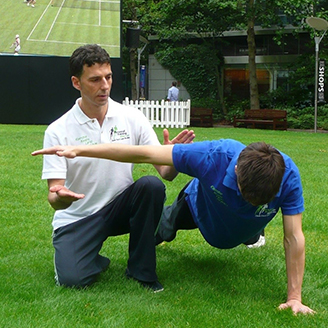
Comment 1